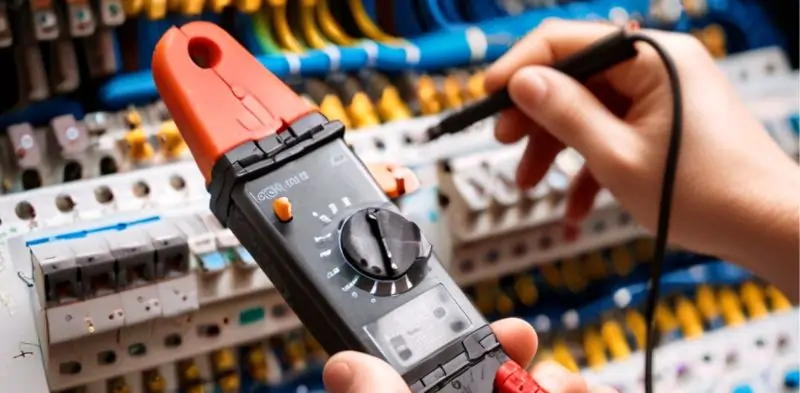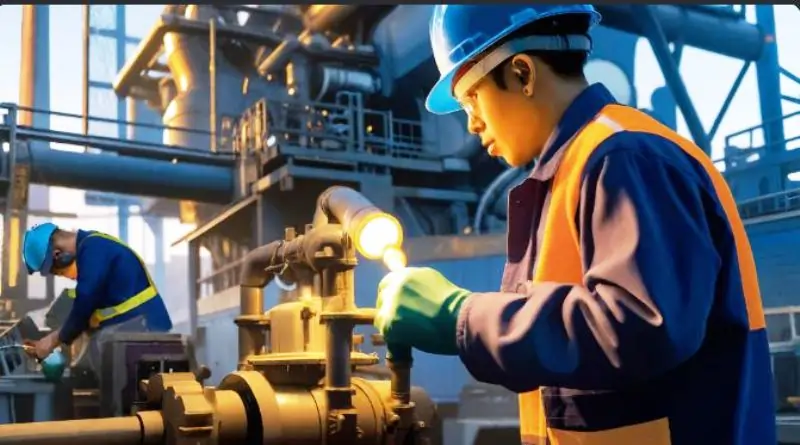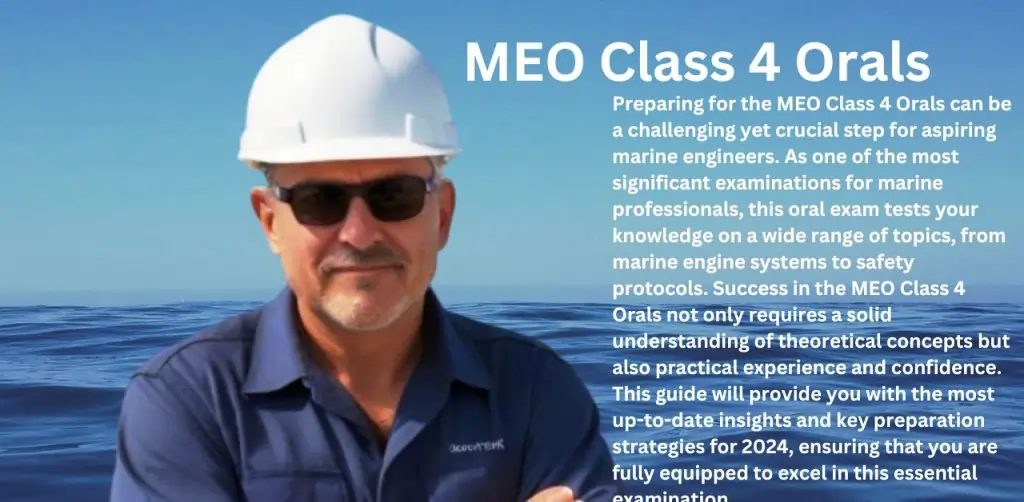MEO Class 4 Orals
Preparing for the MEO Class 4 Orals can be a challenging yet crucial step for aspiring marine engineers. As one of the most significant examinations for marine professionals, this oral exam tests your knowledge on a wide range of topics, from marine engine systems to safety protocols. Success in the MEO Class 4 Orals not only requires a solid understanding of theoretical concepts but also practical experience and confidence. This guide will provide you with the most up-to-date insights and key preparation strategies for 2024, ensuring that you are fully equipped to excel in this essential examination.
MEO Class 4 Orals: Motor
- What is turbocharging and the types of turbocharging?
- What is tappet clearance?
- What do you mean by scavenging? Explain the different types of scavenging.
- In 4-stroke engines, why do inlet and outlet valves have two springs?
- What is piston ring clearance? What types of clearance should be checked?
- Explain constant pressure turbocharging. What are its advantages and disadvantages?
- Explain scavenge space inspection.
- What is Mean Effective Pressure (MEP)?
- What are the safety features of an engine room crane, and how does the electromagnetic brake work?
- What is a scavenge fire, its causes, and the necessary actions to take?
- What is the function of a thrust bearing, and where should dampers and de-tuners be fitted?
- What are the properties of lube oil, and what tests are performed onboard?
- Explain the full process of the stuffing box and the necessary clearances.
- Explain the expansion valve in refrigeration and how it works.
- What is latent heat of vaporization?
- What are the procedures for refrigeration compressor oil charging?
- Explain the jacket cooling water test.
- What is the purpose of the nozzle ring in the turbocharger?
- What is cavitation in pumps, and what conditions can cause a vacuum to form?
- How is power transmitted to the propeller from the engine?
- What is a reduction gear?
- Explain the working principle of a vertical centrifugal pump.
- Explain the working principle and construction of a centrifugal pump.
- What is the purpose of wear rings in centrifugal pumps?
- Explain how the hydro-pore system works and how to charge it.
- What is the working principle of an air compressor, and what is the purpose of the intercooler?
- What is a bursting disc, where is it fitted, and under what conditions does it burst?
- What is engine tappet clearance, and how much clearance is needed for the exhaust valve?
- Explain boiler gauge glass blowdown procedures.
- What are the causes of a crankcase explosion, and what actions need to be taken?
- What is the function of a steam trap, and what checks should be performed?
- How is the charging of a hydrophore done, and explain its working principle?
- Explain the starting air system mechanism. How does the distributor change direction, and what is the mechanism for reversing the fuel cam?
- In the main air compressor, why is the air temperature reduced after the first stage? What are the advantages of intercooling in the second stage, and why is an aftercooler needed?
- Explain the principle and operation of a purifier.
- How is the motor coupled with the purifier, and what is the purpose of the clutch or friction pads? What type of gear arrangement is used, and why is a disc stack needed?
- Explain the operation of an Oily Water Separator (OWS). What are the different parts inside the OWS, why is two-stage separation needed, and what is the purpose of the transducer?
- What is blow-back in a boiler?
- Explain one type of steam trap, including parts and a diagram.
- What are chocks, and what is the difference between resin and resilient types?
- Discuss the lube oil system in a two-stroke engine and compare it to a four-stroke engine.
- What is a thrust bearing, and what is the constructional difference between the main bearing and thrust bearing in a four-stroke engine?
- What is the purpose of a cascade tank?
- Explain how the main engine is reversed.
- Explain the working principle of a freshwater generator.
- What is the purpose of indicator cards, and how are defects identified? Draw the indicator diagram for early injection, late injection, choked scavenge ports, and an exhaust valve leak.
- What is the difference between grid washing and water washing, and what are their advantages and disadvantages?
- What types of air compressors are used onboard?
- Explain the working principle of multi-stage air compressors.
- What is an Oil Mist Detector (OMD), and what actions should be taken when an OMD alarm sounds?
- What are the operational procedures and checks to be done before starting an air compressor?
- What are the types of boilers, and which is better: smoke tube or water tube?
- What is a puncture valve, and what is its function?
- What is cloud point?
- Explain the significance of low pressure and high-pressure cut-out systems.
- What is a boiler blowback fire?
- How is engine power calculated for both the main engine and the generator?
- Name all parts of a fuel injector, explain each part, and outline the procedure for inspection.
- What instruments are used for measuring cylinder liner calibration, and what should be checked?
- What is clover leafing in engine liners?
- What is turbocharger surging, and what causes it to surge?
- What are the disadvantages of super-long stroke engines?
- Why aren’t V engines commonly used as propulsion engines? Is it possible to have an engine with a stroke-bore ratio of 1:1, and if so, what are the advantages?
MEO Class 4 Orals: Electrical

The MEO Class 4 Orals in the electrical section are a critical part of the certification process for marine engineers, testing your knowledge of electrical systems on board ships. This examination evaluates your understanding of key concepts like electrical safety, motor maintenance, fault diagnosis, and troubleshooting, as well as safe practices for handling power systems. Mastering the electrical aspects of the MEO Class 4 orals is essential for ensuring that you can effectively manage, maintain, and troubleshoot electrical systems on ships, contributing to safe and efficient ship operations.
- What is a short circuit, what are the causes of a short circuit, and if running motor experiences a short- circuit, will it continue to run?
- Overload protection of motors.
- Under-voltage protection for AC generators
- How bimetal strips are used as an overload element in motors?
- Operation of thermistor used for overload protection for motors.
- What is induction motor principle and working?
- Types of starters and explain star-delta and soft starter?
- What is the purpose of starters?
- Difference between a fuse and a magnetic circuit breaker?
- What is parallel circuit and series circuit and give example to each of them?
- Battery maintenance in lead-acid battery?
- What is single phasing?
- AVR (automatic voltage regulator) sketch and explanation
- How to test insulation test for an induction motor?
- Megger working principle?
- What are alternator maintenance and checks?
- Explain the working and use of brushless alternators?
- Synchoronoscope?
- How to start a generator onboard a ship?
- How to parallel two generators on board a ship?
- What is excitation, where it’s takes place?
- What is AVR & working?
- What is transformer, principle, working?
- What is mutual induction?
- What is intrinsically safe & its applications?
- What is diode and its working, what is Zener diode and working & difference between both of them?
- What is rectifier & uses?
- Single phasing protections?
- What are motor safeties?
- Battery maintenance?
- What is Single phasing? and explain the reason?
- Zener diode. Uses?
- Megger uses and working principle?
- Thermistor
- Star-delta starter.
- Open short and earth fault?
- Preferential trip How to test it?
- How to test preferential trip.
- Avr working with diagram.
- Types of starters? why star-delta? how starting current is reduced using star-delta?
- MEGGER safeties.
- Motor specifications?
- Transformer working? how voltage is reduced in stepdown transformer? what happens to current in step down transformer?
- What is open circuit, short circuit, earthing and single phasing? with which equipment u check all this?
- How battery charging is done? what is rectifier? how the rectifier work?
- Why reverse power trip. how it works.
- How much is the operating voltage onboard ship?
- Where all synchronous motor is used on board ship?
- Working of 3 phase induction motor.
- Emergency generator on load and offload testing methods.
- Main Switch Board (MSB) safeties.
- Maintenance of Main Switch Board (MSB).
- Emergency Switch Board safeties.
- How can a reverse power occur in an alternator?
- Auto starting of emergency generator-What is power source for sensing relay.
- How to identify earth fault.
- How to increase insulation without dismantling motor.
- What are the parts in ac and dc motor?
- Difference b/w continuity and earth check.
- How voltage is produced in generator and how maintained?
- Capacitor working and whether power will consume or not?
- Transformer loses?
- Working of transformer?
- Working of synchroscope?
- Difference between step up and step down?
- What causes more voltage induced in the step-up transformer?
- What is the test voltage of Megger for high voltage equipment?
- Type of Meggar?
- How to synchronise?
- AVR working and excitation system?
- Current transformer?
- Requirements for paralleling generator?
- Battery maintenance?
- Power factor on ship?
- What is active power and reactive power?
- Types of governor and proximity switch?
- Zenor diode break down voltage and applications?
- Difference between high voltage and low voltage? Apart from voltage rating?
- Mcb and advantages and uses?
- Power factor and significance?
- Types of motors on board and it are being washed with seawater?
- What is IR?
- How to test IR?
- Voltage Regulator In Motor?
- Motor is dismantled what all checks you will do air gap and significance more and less what will happen?
- Neutral vs earth.
This comprehensive list of questions will help you prepare effectively for the MEO Class 4 Orals, covering essential topics that marine engineers must understand thoroughly.
Maintenance and Repairs at Operational Level

The MEO Class 4 Oral Examination tests a candidate’s knowledge of Maintenance and Repairs at Operational Level (MROL), also referred to as Marine Engineering Practice (MEP). This examination assesses the candidate’s ability to manage and maintain marine machinery systems effectively, ensuring the smooth operation of a vessel.
Key topics include understanding routine maintenance procedures, troubleshooting, and repairs of key machinery like main engines, auxiliary systems, and safety devices. The candidate must demonstrate competence in handling critical systems, such as crankshaft inspections, managing exhaust gas systems, and conducting non-destructive testing (NDT) for components like connecting rods, pistons, and other engine parts prone to wear and tear. Knowledge of lubrication systems, hydraulic systems, and safety protocols are also essential.
The MROL/MEP oral exam ensures that engineers are prepared to handle the operational and maintenance challenges they will face at sea, contributing to vessel safety and performance.
- What are the boiler water test and explain the procedure?
- What are the types of piston ring clearance and explain the procedure?
- How to measure the tappet clearance?
- Explain the fuel pump overhauling procedure?
- Explain the procedure for gauge glass blow through?
- What is the reason for purifier overflow reason?
- Actions to be taken in the case of low level water alarm in boiler?
- What are the safety valve parts and explain each of them?
- What happens, if the water level in the boiler is not maintained?
- What are the safeties of compressor?
- What is bumping clearance and its importance?
- Reason for providing non-return valve on compressor discharge side?
- How will you check the low lube oil pressure or high air temperature trip in the compressor?
- Procedure for checking main engine bottom end bearing clearance?
- How to purge the air from refrigeration system?
- Reason for a frequent cut in and cut out in refer?
- High pressure cut out reason in refer? (refer to the answer of freq cut in and out)
- Purpose of wear ring and where it is fitted?
- What actions will you take when the bursting disc will burst?
- . What are the functions of pairing disc?
- What is the reason, purifier vibrates at time of stopping?
- What are the maintenance to do for a engine room crane?
- How to measure the crankshaft deflection?
- Lube oil tests perform on board ship?
- Procedure for the jacket cooling water test?
- What is difference between smoke tube boiler and water tube boiler?
- If the boiler alkalinity increases or decreases what will the action you take?
- Scum blow down procedure?
- Fuel pump overhauling procedure.
- Explain the procedure for turbocharger washing?
- What are the checks to be done air compressor on start, stop, and operational conditions?
- Explain about scavenge space inspection?
- What is the procedure for overhauling of cylinder head?
- What is the procedure for cylinder liner calibration?
- Explain about welding defects?
- How to detect leaking in the shell and tube type heat exchanger?
- What are essential mounting on the boiler?
- What will do if crosshead bearing clearance increases?
- How to perform an accumulation pressure test?
- What are the different types of burners?
- What is the reason for the flame failure alarm?
- What are the checks we need to do while starting a pump?
- What is the procedure for overhauling of caged exhaust valve?
- What are stresses acting on the con-rod?
- What is cavitations and how it is formed on propeller?
- What is the reason for bilge pump not taking suction?
- How to perform the fuel injection pressure test?
- What procedure for lube oil filters cleaning?
- What is the K value? And its purpose in turbocharger?
- Explain the procedure for overhauling of fuel injector?
- What is the reason for scavenge fire and action to take when there is a scavenge fire?
- Explain about various trouble shootings of boiler?
- Maintenance of auxiliary marine boiler.
- Maintenance schedule of auxiliary boiler.
- Maintenance of water tube boiler.
- Maintenance of smoke tube boilers.
- Maintenance of Exhaust gas boilers.
- What is your action, as a duty engineer when you receive a low level water alarm in boiler?
- Explain the procedure for overhauling of exhaust valve?
- What is the procedure for overhauling of centrifugal pump?
- What are the checks to be done on air conditioning system from start to stop position?
- What is NDT -Non Destructive Test and explain its methods?
- Explain about dye or liquid Penetrant test?
